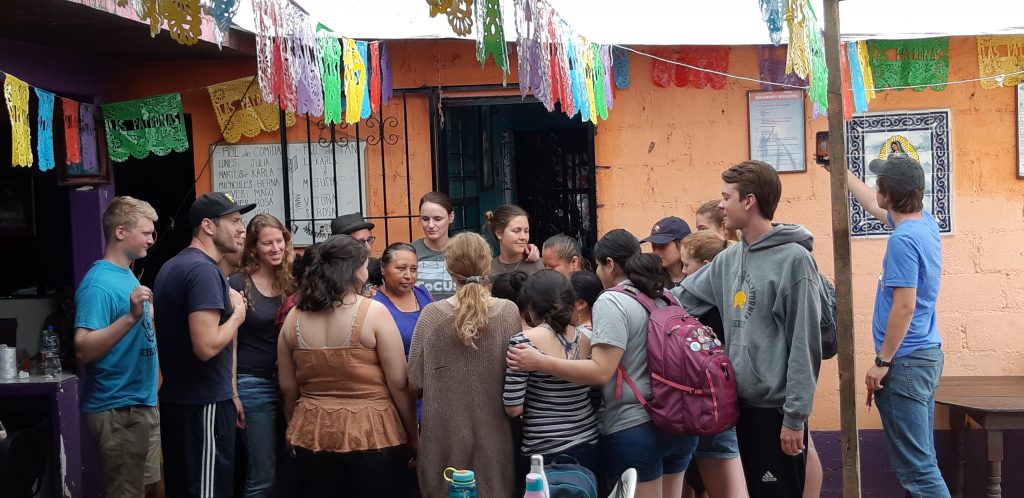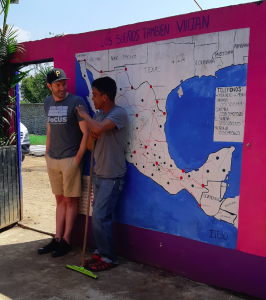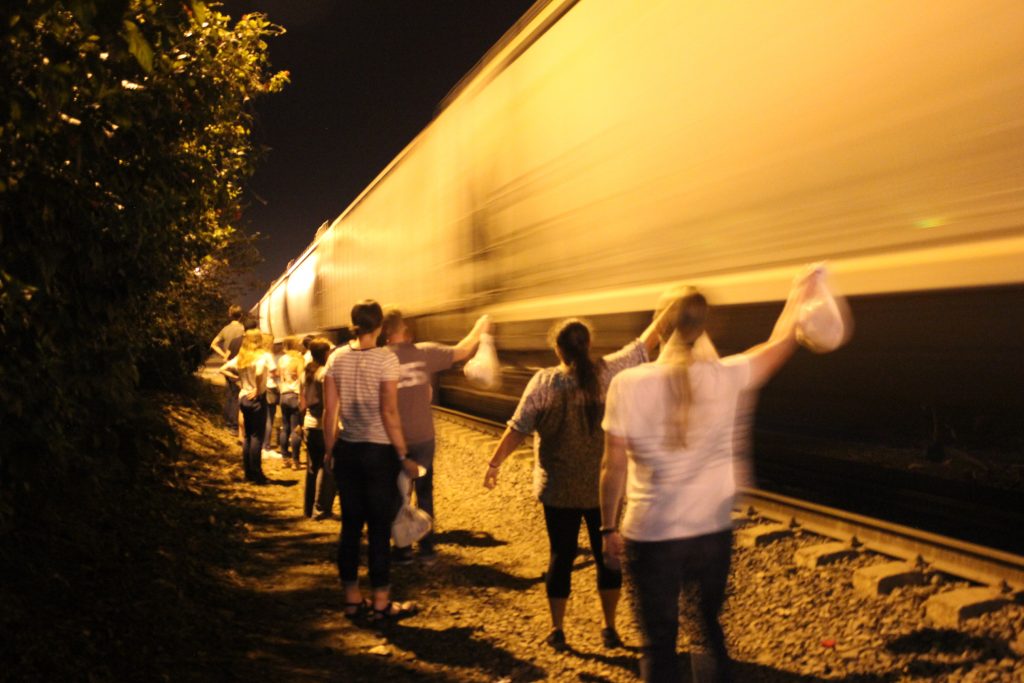Face to face with migration
Por: Patricia Olivares
Have you ever wondered why there is a global migratory crisis or why there are so many positions on this phenomenon? Above all, what is the vision of a migrant person? What is their life like or what are their dreams? Within the framework of International Migrants Day, Ingrid Jezabel Villagrán Espinosa, Manager of Amextra Semillas, speaks to us about the immersion trip in Mexico, “Face to face with migration” and how it changed her vision on the subject.
“My vision has changed radically, and I’m thankful for that. I was one of the Mexicans who said: let them get to work; there is work everywhere. I didn’t know everything that was behind, but after realizing that it was a matter of life or death to leave their houses, they had a lot of strenght and courage to leave everything. I did not imagine all the stories I was going to hear during all these trips. It has been a blessing.”
Ingrid is responsible for organizing and carrying out the immersion trip “Face to Face with migration” in Amextra to provide an experience from different perspectives, and generate an impact on people who travel to Mexico to meet the phenomenon of migration in the south of the country. With each trip, she has grown personally and professionally and created a special bond with each group of travelers.
“After meeting the visitors you bond because you share feelings. We are all together because we feel the same, which makes you connect with another kind of people. It has made me think about many things for my future and my country. And how each person can maje an impact from wherever they are, whoever they are.”

Amextra Semillas seeks to create spaces for cultural exchange among the travelers to Mexico, and the projects where Amextra works, as well as collaboration with other institutions or like-minded people, where reflection is encouraged, to generate a personal and collective impact.
Thanks to Amextra’s relationship with Christian churches for several years, various foreigners have come to Mexico, specifically from the United States, interested in the issue of migration to learn about other realities and have a more direct approach to what is happening. “In the last 10 to 15 years, there has been a radical movement from South America to North America, and the migrants spend longer in Mexico. The church has always been a safe place for anyone of any denomination, and the congregations ask themselves: what are they coming for? There is a lot of uncertainty.”
Amextra Semillas links these foreign churches with associations, shelters and key people from different perspectives so they can tell them out loud what is happening. This way, visitors can listen, see and feel, even get acquainted with some migrants because they do it directly. “The goal of the trip is to learn about migration from different voices, and even if it’s a small group, when you return to your place of origin, there is a greater result because an impact is achieved with the people who receive the migrants. This approach results in making better decisions”.
Ingrid says that the trip has four stages; the first one consists of knowing and analyzing the route that migrants follow and the different challenges they face in each place. You can find an expert on the subject who works in a shelter and does a general mapping of the context. Afterward, the shelter where people arrive is known, they visit several caves and their conditions:

“Where they arrive, what they do there or what can they do there, because it is difficult to arrive to the shelter wher eyou don’t have the basics. There are 30 people and one bathroom that ends up dirty and there are illnesses, they share a room, or they have to separate their families.”
The third topic is to get involved in some way, such as doing volunteer activities or having space for exchange, that is, talking with the migrants. “ They are person to person because that is how we should see these things. Talking directly with the people involved, you will see different emotions and thoughts”.
Finally, the last step is to reflect on what we live. Every day on Amextra Semillas trips, there is a reflection to share thoughts, feelings, ideas, concerns, learning, etc. Ingrid goes along and guides this process:
“Through this reflection, we want you to absorb what you experienced and take it, first, to your thinking and feeling, and then to your town where you can make an impact where you think you can. For example, if you are a leader in your association or if you are a volunteer in the church; you can generate a change from there. Meaning, that at the end, there is a change from different environments”.

Ingrid Villagrán expresses that knowing the stages of the migratory phenomenon is impressive and that in each trip, you learn and experience something different but remember in particular 3 cases. The first one was with California students who have taken this trip 4 years in a row. Now, they have a specific group and program to serve migrants, meaning that, with each trip they reaffirm their vocation and generate and cause an impact in their community.
The second case is the personalized trip; a Canadian student who used to live in Costa Rica wanted a trip just for him. On this occasion, it was possible to interview an entire family of migrants, each member with a different perspective. As a traveler, a closer connection could be created.
The last case was a group of women from the National Immigration Forum who were making a documentary, still they were all mothers, so they could send a link with the DIF to visit the ‘unaccompanied children’.
“It was the most emotionally radical visit because they were mothers who came to a place where children are alone, abandoned, separated from their families or girls are pregnant. It was an emotional shock, they told me: ‘I can not understand how my sun would be traveling alone to a country”.
The documentary makers met the reality in the border, but they never had this approach to what happens in the south of Mexico. “These women run different organizations, and I would like to believe that it helped to reaffirm their task and see how far they can help, to see an impact on a large scale. “
Ingrid had a radical transformation process in her life; thanks to these trips, she was able to know and understand other realities, be empathic and seek to generate a change or impact through the Amextra Semillas trips, where they offer to learn different perspectives in the same experience.

“This kind of tri has been a blessing for me and I would like to invite more people to live this experience with Amextra Semillas or with other associations; even a visit to a shelter changes your vision a lot. It makes you think if a four member family moved forward together and is there together; this is when you realize the value of the family, of your loved members, of your dreams, but in the end, everything changes, we don’t know when it’s going to be our turn to migrate”.
Travel with Amextra Semillas!
Links “Face to face with migration”:
- LAS PATRONAS.
- COMI.
- ALBERGUE DE NIÑOS MIGRANTES Y EN TRÁNSITO, DIF.
- MANO VUELTA A.C.
- INSTITUTO OAXAQUEÑO DEL APOYO AL MIGRANTE IOAM.
- ALBERGUE MIGRANTE DE LAS HERMANAS SCALABRINIANAS.
- CASA DE LOS AMIGOS.
- CAFEMIN.
© 2023 Amextra, Asociación Mexicana de Transformación Rural y Urbana A.C. Todos los derechos reservados, México 2017-2023.









Leave a Reply